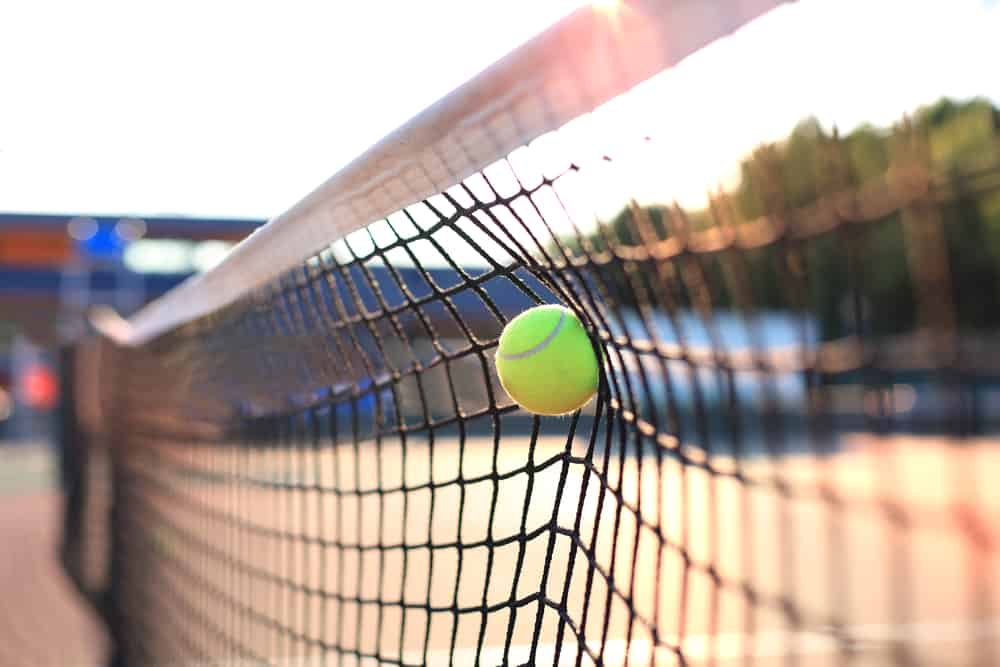To be successful as a tennis player, you need to be precise, focused, and implement a strategy. Tennis has a lot of intricate rules, and understanding them is one of the most critical aspects of the sport.
A fault occurs when a player violates certain rules during the serve or play. This can result in losing a point, a game, or even the entire match. Therefore, it’s important for players to understand faults so they can avoid making mistakes and maintain a competitive edge.
POINTS
- Faulting in tennis is an incorrect move made during the serve that results in the player losing a point, game, or even match.
- There are several types of faults including serving a ball out of bounds, double-faulting on serve and hitting the ball into the net on serve.
- Line judges and technology such as Hawk-Eye are used to determine who has faulted in a match from either side of court.
- Consequences for faulting vary depending upon type – e.g., loss of service when serving out or double fault occurs; immediate loss if two consecutive faults occur during same service attempt; etc..
- Proper technique combined with regular practice & mental preparation can help players avoid making mistakes that could cost them points/match – examples include focusing on techniques (e.g., grip & arm motion), targeting specific serves within court boundaries, choosing right serves for situation (i.e., safer vs. riskier) and managing nerves/staying focused during matches.
What is a fault in tennis?
A fault in tennis is an incorrect move made during the serve that results in the player losing the point. There are several types of faults in tennis, including serving a ball out of bounds, double-faulting on serve, and hitting the ball into the net on serve.
Serving a ball out of bounds occurs when the player hits the ball outside the designated court boundaries. This can happen when the ball lands on the line or goes beyond it, either to the left, right, or back of the court.
When this happens, the server loses the point, and their opponent is awarded the serve. This error occurs very frequently, especially with new tennis players who have not yet mastered their serving technique.
Double faulting occurs when the player makes two consecutive faults during the same serve. This can happen due to a player’s nerves, poor technique, or simply a lack of practice. Double faulting can be particularly frustrating for many players because they lose the serve and give their opponent an opportunity to take the lead.
Double faulting can also impact a player’s confidence and mental state, making it difficult for them to bounce back and perform well in the rest of the match. To avoid double-faulting, it’s best to focus on technique, practice regularly, and try to stay calm and composed under pressure.
Types of faults in tennis
There are several types of faults in tennis, including serving the ball out of bounds, double-faulting on serve, and hitting the ball into the net on serve.
1. Serving the ball out of bounds
This occurs when the ball lands outside the designated court area during a serve. A player is allowed two attempts to serve the ball within the bounds, and if they fail to do so on the second attempt, it is considered a double fault and results in the loss of the point.
2. Double faulting on serve
A double fault occurs when a player makes two consecutive faults on their serve. This results in the loss of the point, and the opponent is awarded the serve.
3. Hitting the ball into the net on serve
If the ball makes contact with the net and does not go over to the opponent’s side, it is considered a fault. The player must then serve again to try to get the ball over the net.
How is fault determined in tennis?
The line judges are usually responsible for determining who has faulted in a match from the sides of the court. These officials are responsible for observing the ball during serves and play and determining whether it lands in or out of bounds.
If a ball is called out, the line judge will signal this to the chair umpire, who will make the final decision. In some cases, the chair umpire may overrule the line judge’s call if they believe it to be incorrect.
Aside from the line judges, technology is being used more and more to determine faults in tennis. One of the most commonly used systems is Hawk-Eye, which uses cameras and computer software to track the ball’s flight path and determine whether it landed in or out of bounds. It has become an important tool for players, umpires, and fans alike, providing a more accurate way of determining faults and resolving disputes.
What are the consequences of faulting in tennis?
The consequences of faulting in tennis vary depending on the type of fault that has been committed. For example, if you serve the ball out of bounds or commit a double fault, the result is typically a loss of serve. This means that the player will no longer have the opportunity to serve and will instead have to receive the ball from their opponent.
In the case of double-faulting, the consequences can be even more severe. Double faulting results in a point penalty, which means that the player immediately loses the point. This can significantly impact the outcome of the match, especially if the player is serving at an important moment.
Players should have a thorough understanding of the consequences of faulting in tennis so that they can avoid making mistakes that could cost them points or even the match. By being aware of the rules and regulations, players can focus on their strategy and maintain their composure during the match.
Tips for avoiding faults in tennis
Proper technique and regular practice are the keys to avoiding faults in tennis. Here are some tips to help players avoid faults in their game:
1. Proper technique for serving
The key to avoiding faults on the serve is to have proper technique. This includes having a solid grip, right arm motion, and proper footwork. It’s important to focus on these elements during practice so that they become second nature during a match.
2. Practice and repetition to improve serve accuracy
Regular practice and repetition are crucial for improving serve accuracy. Players should focus on serving specific targets and work on hitting their serve consistently within the bounds of the court. This will help players build confidence in their serve and reduce the likelihood of committing faults during a match.
3. Choosing the right serve for the situation
Players should also consider the situation and their opponent when choosing the type of serve they will use. For example, if a player is facing a particularly strong returner, they may want to choose a safer, more accurate serve rather than a riskier, high-speed one with a greater chance of being faulted.
Players should also work on mental preparation, such as managing their nerves and staying focused during a match. By combining proper technique, practice, and mental preparation, players can significantly reduce the number of faults they commit during a match.
FAQ
What is the difference between fault and out in tennis?
In tennis, a fault refers to a specific type of mistake that is committed during a serve, such as serving the ball out of bounds or double faulting. An out refers to the ball landing outside of the designated play area.
How many faults are there in a tennis serve?
A tennis player is allowed one fault per serve. If a player faults twice in a row, it’s called a double fault and results in the loss of the serve and a point for the opponent.
How many faults before you lose a point?
A player loses a point to their opponent if they commit two consecutive faults on the serve or if they commit a fault during a rally.
Is it a fault in tennis if you miss the ball?
No, missing the ball is not considered a fault in tennis. However, if a player misses the ball and it goes out of bounds, it results in a point for the opponent. In tennis, faults are specific mistakes made during a serve, such as serving the ball out of bounds or double faulting.
Conclusion
In conclusion, faulting in tennis can have a significant impact on the outcome of a match. By understanding the rules and regulations, developing proper techniques, and honing your skills through regular practice, you can significantly reduce the number of faults you commit during a match.
Whether you are a beginner or an experienced player, following these tips and focusing on avoiding faults can help you play your best and reach your full potential on the court. Remember, a strong and consistent serve can be a major advantage in a match, and by avoiding faults, you increase your chances of winning points and securing a victory!
 Written by Mark Sampson
Written by Mark Sampson